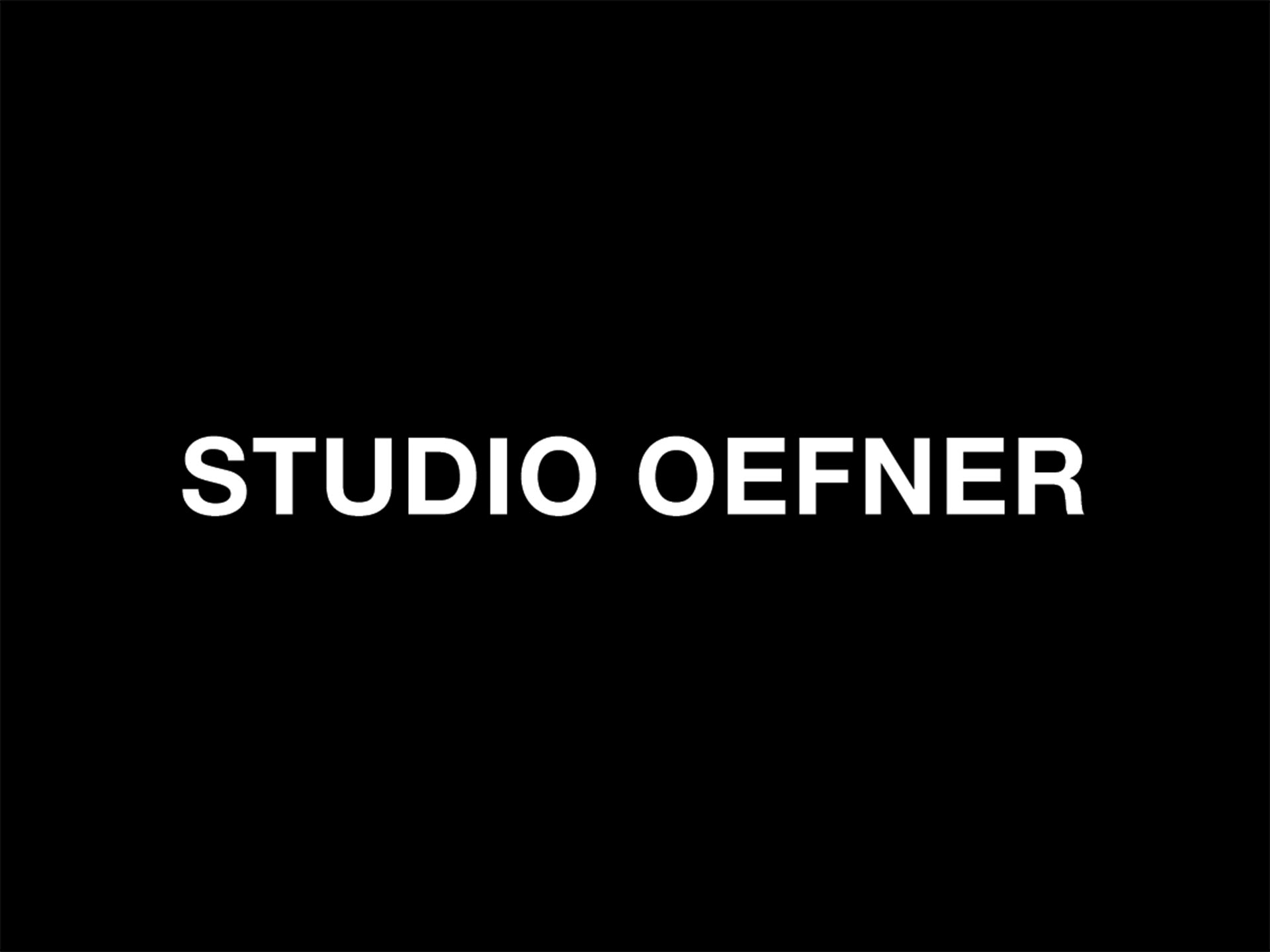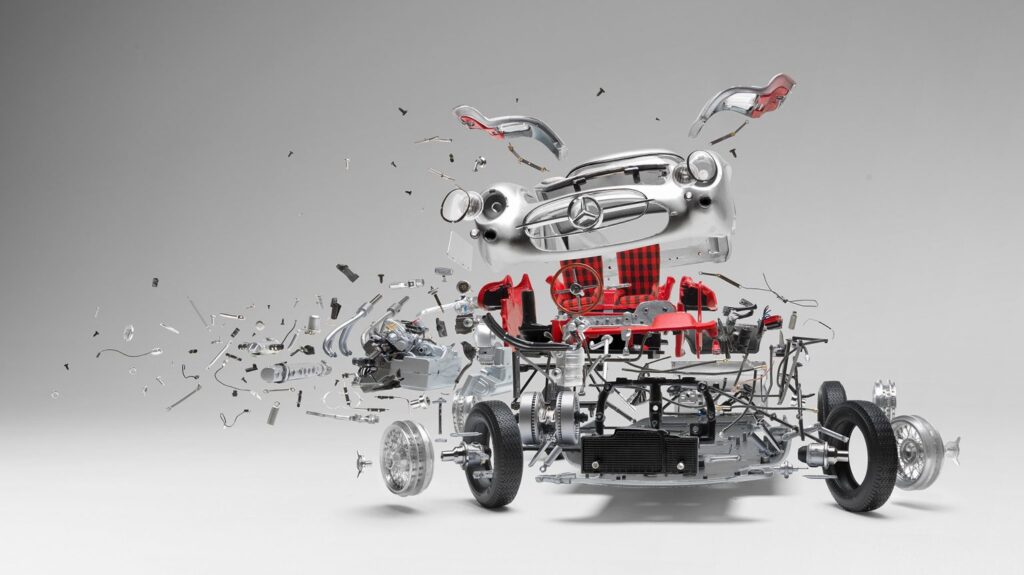
Swiss artist Fabien Oefner is thoroughly in tune with the times. He has a great belief in using social media to share his work, as such, you probably know his compositions but you may not be able think where from.
Indeed, my discovery of the Oefner ouevre came via a fairly uninformative blog by a popular UK broadsheet, the paper leaping on a recent work that had been doing good business on social media and turning it into the kind of breathless pseudo-news popular on the Internet.
Although readers were not in danger of learning anything from the written content many must have been happy to have discovered an artist with the capability to produce such intense imagery; a modern sorcerer, Oefner expertly melds science and art to produce photographic images that exploit the camera’s ability to freeze time and make the viewer stop whatever it is they might otherwise be doing.
A number of such works focus on the car as their subject, Oefner’s camera and lens force us to re-evaluate how we look at this familiar expression of Modernity.
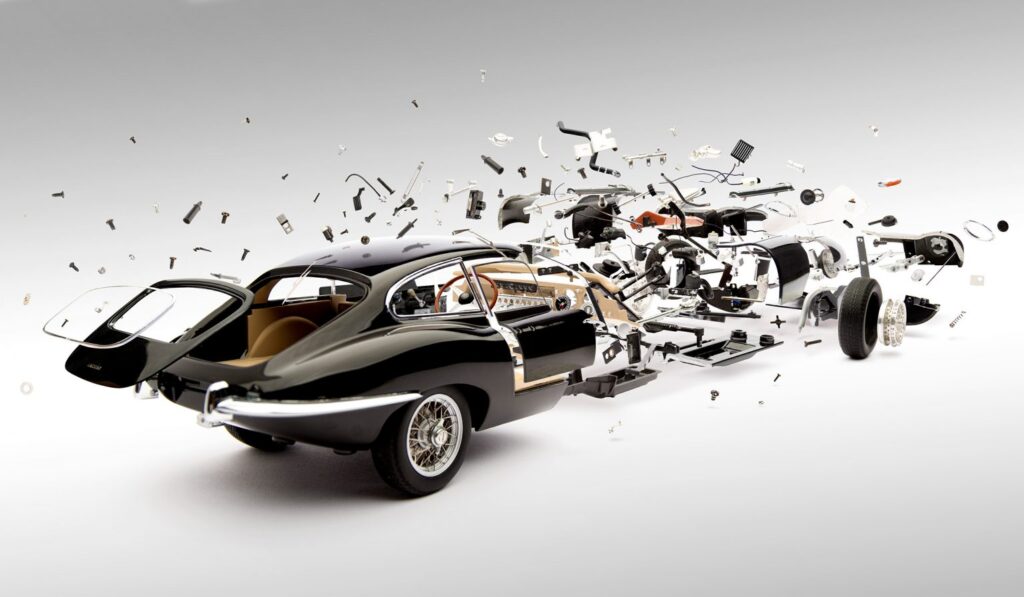
SPLENDOID: Fabian, to start us off, I’d like to discuss your subject choice. You have a wide range of work but you keep coming back to cars, specifically classics. Why this interest? Are you a motoring enthusiast or is it more what the car, as a human construct, symbolises?
Fabian Oefner: It is a combination of both. I have always been a bit of a petrol head. But the main reason why I have chosen cars for my last two projects has its root in the fact, that it is such a strong symbol on many levels. An object of passion and beauty. The sensation of motion. Technological progress. Almost every person on the planet can in one way or another relate to cars. It has almost become part of the human DNA.
For the „Disintegrating“ series, I have used classics because the interior life of these cars is richer compared to modern day cars. I particularly loved the futuristic look of the bodywork of the Mercedes SLR300 compared to its rather old-fashioned chassis underneath. I gives you a lot of room artistically speaking, to explore the aesthetics of the image.
What gave you the idea of the ‘exploded view’ approach that you used? Is it a play on the Haynes manual or model kit instruction leaflets drawing perhaps?
It’s difficult to pinpoint where exactly an idea originates from. It usually is the sum of all the things that cross my mind as I am working on a new series. One fact, that certainly had an influence is the fact, that I used to work on real cars. When I looked at the manual of lets say the engine block, you could see these magnificent exploded view drawings of how the individual parts work together. However from an intellectual point of view, it was rather my previous work of stopping time that ultimately led to the creation of „Disintegrating“. Its like an evolution of the things I have been working on prior to the series, where I was asking questions like: What is time? How do we become aware of time? etc.
This idea of ‘frozen time’ is inherent in photographic theory and is commonly explored by cinema, perhaps most directly in Matrix style blockbusters. It’s also a popular subject in gallery art, I’m thinking of Cornelia Parker’s Cold Dark Matter or Frozen Study of Disaster by Los Carpinteros. Were any of these an inspiration for the project?
It’s interesting that you would mention „Matrix“. Even though this wasn’t an inspiration for my work, it certainly introduced the aesthetics of stopping time to a wider public. I think in that sense the movie did have an effect on my art, not so much as an inspiration but rather as a visual door-opener for that kind of art.
If you go back further to what inspired the makers of „matrix“ you will certainly come across the name Harlod Edgerton. It was him, who invented High Speed Photography and enabled humans to look at events, that are usually to fast for the naked eye to see. Images like the apple being penetrated by a bullet or a card sliced in half have become icons in photography by now. „Disintegrating“ is a continuation of that work. It looks just like the images you would now of events that happen at very high speeds. Only this time, the event never took place. It is an illusion that is created in our mind.
Could you explain the process of how you captured a split second in time so effectively?
As mentioned earlier, my previous work I was investigating real-world events that happen at a split second. For „Disintegrating“ I wanted to create the illusion of an event, that looks just like such a photograph, but in fact is completely artificial. For that purpose, I took the model cars apart and photographed each single part in its relative position in the final image. The car was then put back together digitally to create the illusion of a car, that is being influenced by gravitational or centrifugal forces.
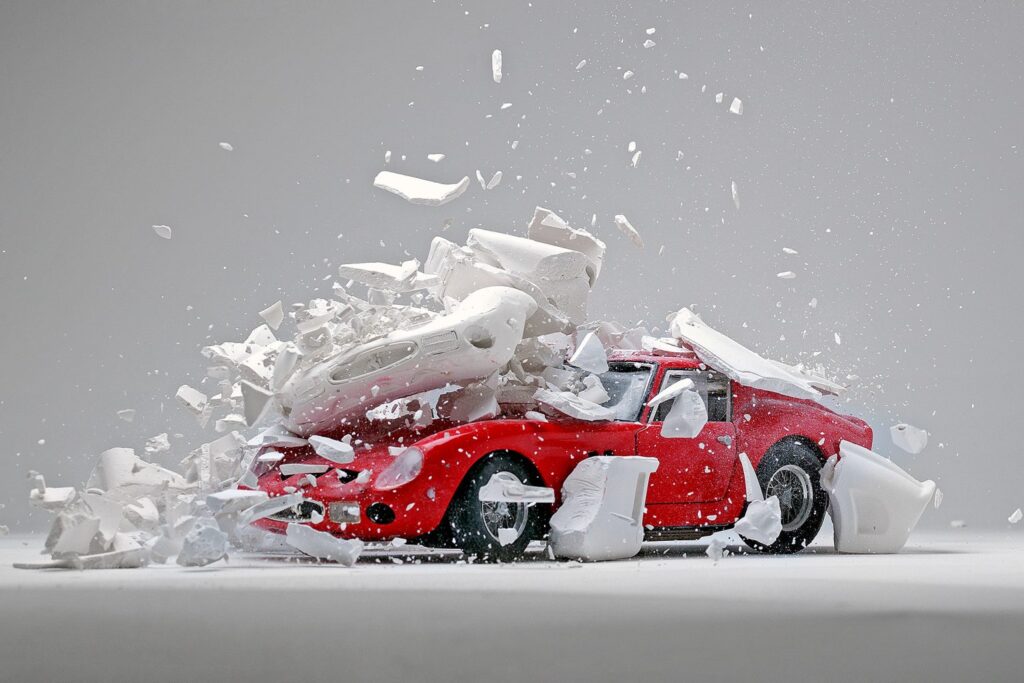
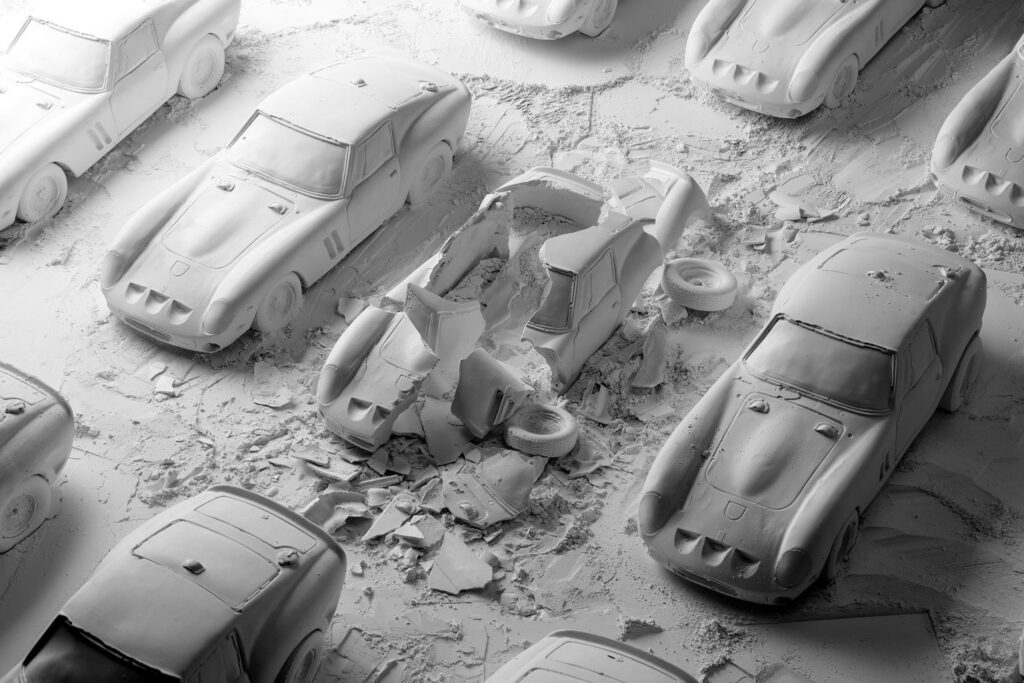
Moving on to another project, ‘Hatch’ is the conceptual opposite of Disintegration. Again birth is a strong concept in Art; religious motifs through Faberge eggs to Jeff Koons et al. How did your take on the idea come about?
The idea for „Hatch“ originated in the idea, that during the last few years, we developped a stronger and stronger bond to products. We identify ourselves with them, build emotional bonds to them. „Hatch“ combines that idea of showing a technical, lifeless object, such as a car and combines it in the emotional contex of birth.
Could you describe the process in making the work?
The shell you see in the photographs are made of plaster. In order to create them, a latex mold was made based on the model car. To capture the very moment, where the car „hatches“ from the shell, a soundtrigger was connected to the camera. The shell was then smashed onto the model car, giving it the apperance of the car breaking free of its shell.
The models used in both these works are very high detail. Did you build them yourself or are they sourced from elsewhere?
Some of them are commercially available models, others were custom-built.
How many attempts did you go through for both projects before they looked correct? Did you spend a lot of time tweaking and retouching or is the final product all done in camera?
As the process for both series was quite different, its difficult to sum it up in one answer. But one thing that is consistent throughout all my projects is a very high level of attention for details. I usually work on very few series per year, sometimes just one. But I do it with a very high standard in terms of technical realization. Its something very dear to me. In order to confront the viewer of my art with the concepts behind it, I think he or she deserves that level of dedication.
Would you consider doing these type of interruptions to real cars?
I have no such plans at the moment. I’m not sure if doing it with a real car would add anything to the image, conceptually speaking.
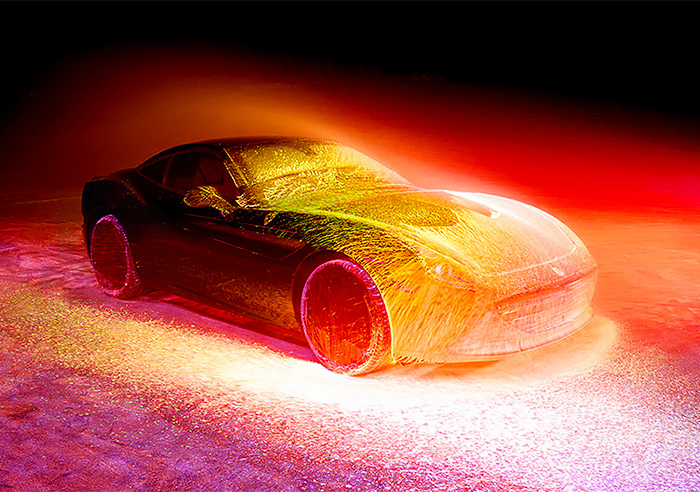
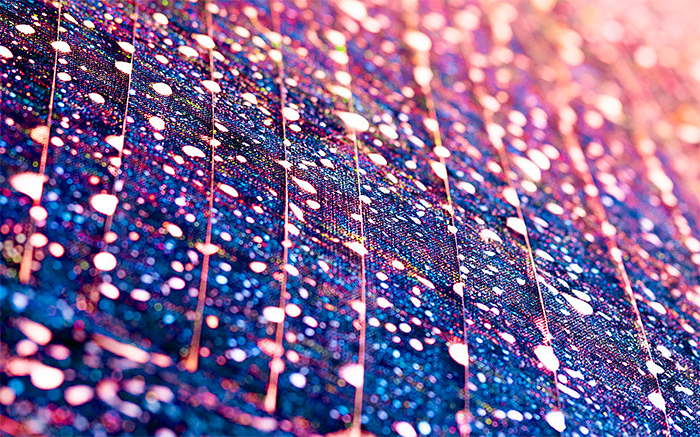

Which brings us nicely to the collaboration with Ferrari using a real California T, UV coloured paint and a wind tunnel. How did the project come around? Did you approach them or did they approach you?
About a year ago, Ferrari has approached me and asked me if I would like to work on a project together with them, that captures the essence of the brand and in particular the one of the Cali T. I was immediately fond of that idea, as Ferrari is one of the most fascinating brands in the world. The heritage behind the prancing horse, the myth behind the cars….there are just so many aspects that make this brand particularly interesting to collaborate with.
We’ve seen how you work with models, how did you approach working with a full size car?
Ferrari invited me to come to Maranello and look at the factory, talk to the designers and engineers, paint experts, technicians, everybody that is involved in creating a Ferrari. One thing that particularly fascinated me is a technique that they use to test the aerodynamics of their formula one car. They apply a special „flow visualisation“ paint to the car and put it in the wind tunnel. As the paint runs across the surface of the car, the aerodynamical properties become visible. My idea was to bring that scientifc test into the world of art. I wanted to visualize a Ferrari with the aid of speed. Therefore, we placed the Ferrari California T in a pitch-black wind tunnel, only lit by UV lights. As the UV-active paint runs across the surface of the car, it starts visualizing it, the car materializes itself out of the darkness. Its as if it is created by speed….
The car was clearly prepped to avoid it but was there any resultant damage to the car?
As this was a proper $200.000 production car, we made sure, that there was no damage caused to the car.
Do you see your work as fitting into the tradition of auto-destructive art (work that spoils cars rather than maintains them – Ed) I’m thinking of John Chamberlains or Dirk Schreber’s crushed and warped cars specifically but there is a long tradition of work that tampers with the majesty of the automobile to some degree.
Although I am familiar with their work and appreciate it, I wouldn’t call my art any sort of auto-something art. In the case of Ferrari, it wasn’t so much about the car, rather about the sensation of speed and my quest to find a way to convey it in a visual form. Compared to my other works, car-related projects form a very small part
What will be your next project? Is it another automotive based one perhaps?
We are working on an installation at the studio right now, that is about turning soundwaves into motion. I have been exploring this world already a couple of years ago, which resulted in the creation of „Dancing Colors“. This time, its an installation that lets the observer perceive that idea with a greater range of senses. The piece will be exhibited for the first time at Il Salone 2015 in Milan.
And then there is another project that I am working on, that has to do with Einstein`s theory of relativity. This will be displayed later this year in New York.
Do you work in other mediums apart from photography? (and the sets ups that you photograph of course)
Very much so. Whichever medium feels best to convey my ideas I am happy to use. So far, photography has been my tool of choice. But for example for the concept above, the soundwaves turned into motion, I felt there is a better way of conveying these ideas, by creating an installation.
I first came across your work via a UK newspaper blog but you also use artistic communities like Behance to great effect, do you also show in galleries or do prefer this social media approach?
I appreciate the power of online networks and communities. I think the internet has had a huge impact on how art is communicated during the last couple of years. However, I do also show in galleries, do exhibitions in not art-related environments and occasionally also give talks at either universities such as MIT or Beihang University or events like TED. I think nothing can ever replace the sensation of looking at physical artwork, nor communicating ideas, being it art-related or not, face-to-face.
That feels like a good place to finish. Many thanks for taking part.
My pleasure. Thank you!

